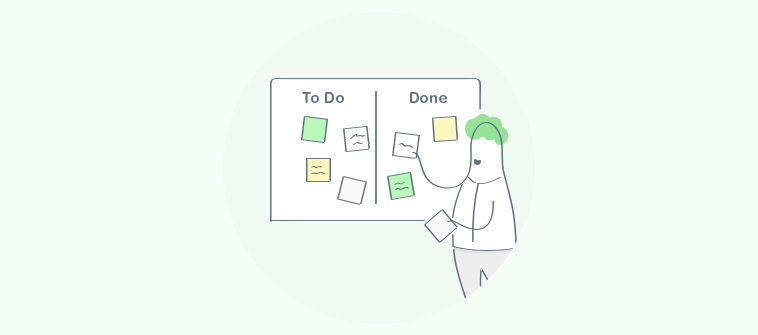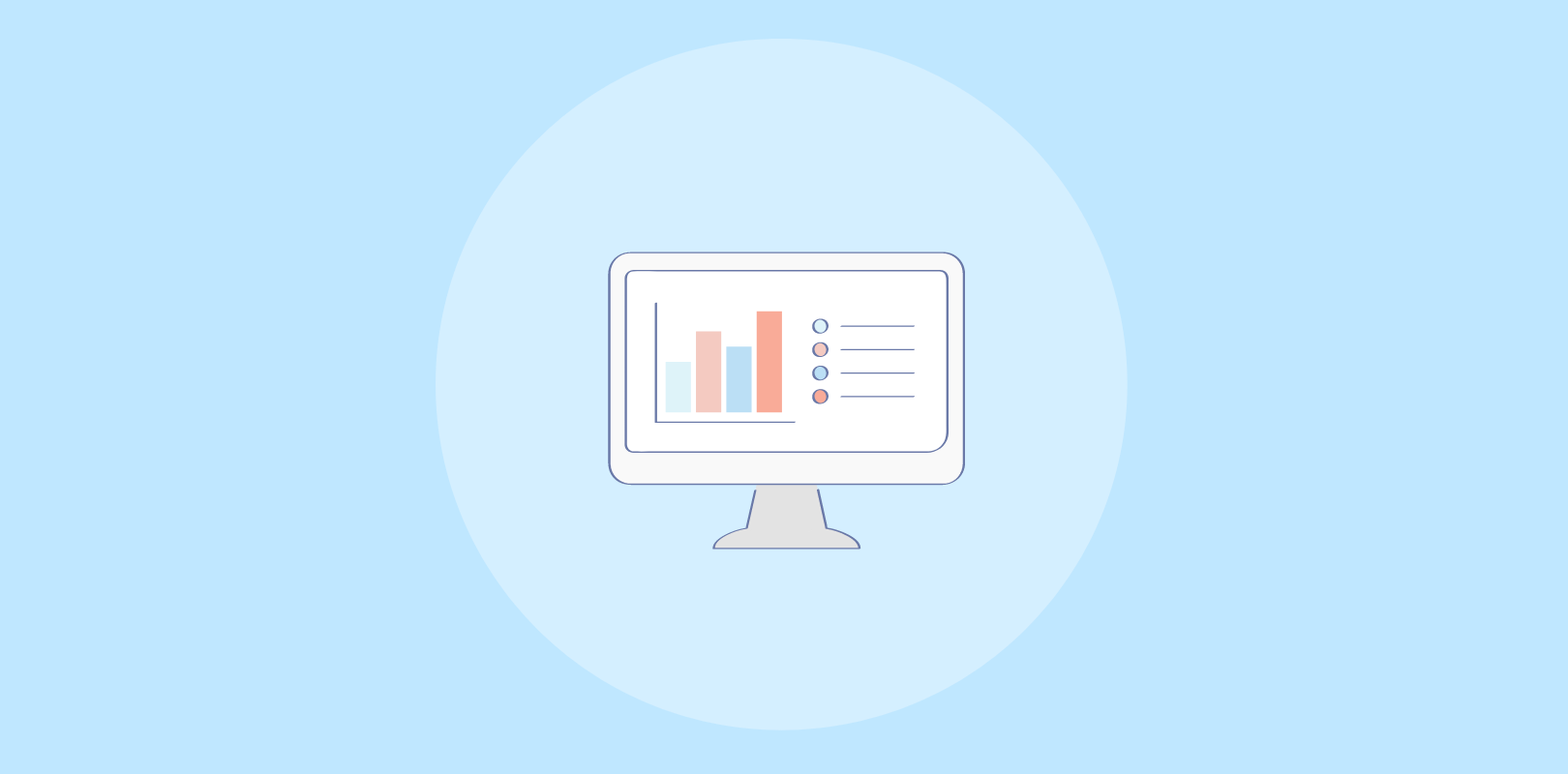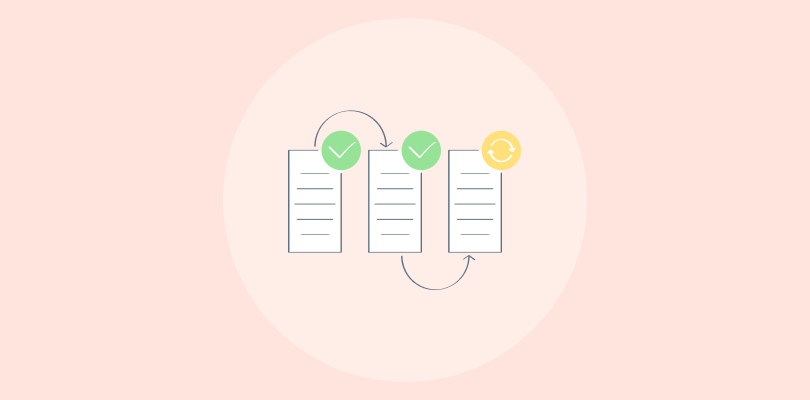Have you ever wondered how project managers or team leaders plan and execute complex projects with multiple tasks and deliverables? How do they ensure everything is done on time and within budget without compromising quality or scope?
The answer lies in understanding and managing task dependencies.
Now, I know many of you may have a basic understanding of task or project dependencies. But, if you are looking to have a more in-depth understanding of a task dependency, then this is the right blog.
Here, I’ll share everything I know about dependencies, their types, benefits, and a lot of other things. So, let’s get started.
What Are Task Dependencies in Project Management?
Before we move to the definition, I’ll give an example to help you understand project dependencies better. Imagine you are planning a birthday party. Now, let’s assume here are some of the tasks you have to complete –
- Bake a cake
- Decorate the cake
- Buy balloons
- Buy a gift
- Decorate the venue
- Invite guests
- Play music
Now, some of these tasks are dependent on each other – meaning you cannot do the next task until you have completed the previous one. For instance, you cannot decorate the cake before you bake it, nor will you invite guests before doing any of the previous tasks.
These are examples of task dependencies. They show the order and sequence of the tasks and how they affect each other.
So, what exactly are task dependencies?
Well, dependencies are the relationships between tasks that determine the sequence of their execution. They are essential for project management, as they help to define the project schedule, identify risks, allocate resources, monitor progress, etc.
What Are the Different Types of Task Dependencies?
There are four main types of task dependencies in project management based on the relationship between their start and finish dates. They are:
1. Finish-to-Start (FS)
This is the most common type of task dependency, where one task must finish before another task can start.
Example: Think of creating a new office space. Raw materials need to be acquired first before the process starts.
It is the most common type of dependency and forms the foundation of most projects. However, this type of dependency can also create delays or bottlenecks in the project schedule if the predecessor task takes longer than expected or faces any roadblock.
2. Start-to-Start (SS)
This dependency indicates that two tasks must start simultaneously. It is used when the two tasks are interdependent and cannot progress independently. Also, none of the tasks need to be finished first for the other to start.
Example: You want to water plants using a pipe. For that, you need to first fill the water tank.
Here, filling a tank is the predecessor task which must be started first. Only then can you start watering. But, it is not necessary that you wait for the tank to fill to the brim so that you can start watering the plants.
3. Finish-to-Finish (FF)
With this dependency, two tasks must be finished at the same time. FF dependencies are not commonly used, but they can be helpful when multiple tasks contribute to a single outcome. Note that both tasks may run simultaneously but may not complete together. One task will be finished after the other.
Example: An easy example will be that of constructing a house. Only as the walls are built can the painting process start. However, all the walls must be constructed to finish the painting work completely.
Thus, the task of the painting work is dependent on the construction of the walls. Though both tasks can be carried out simultaneously, one cannot be finished until the other is finished.
4. Start-to-Finish (SF)
The most uncommon and somewhat paradoxical type, SF dependencies are best illustrated through scenarios where ongoing support or operations must begin to enable the completion of another task.
Example: You need a professional, full-time photographer for regular corporate events. But, being unable to find one, you hire a student who agrees to work part-time for your events.
Here, the student’s tenure cannot be finished until you hire a professional photographer.
How to Determine Task Dependencies
Determining project dependencies is like piecing together a puzzle set. Yes, it’s tough unless you know what you should be looking for. I’ve picked some basic steps for you. These should help you create a realistic and accurate project schedule.
1. Break Down the Project Into Tasks
Start by dissecting the project into smaller, manageable subtasks. This decomposition is akin to preparing ingredients before cooking a complex dish. Each task should be clear and concise, ensuring that every team member understands their responsibilities.
2. Identify Relationships
With all tasks laid out, the next step is to map out their relationships. Ask questions like:
- Does Task A need to be completed before Task B can start?
- Can Task C and Task D happen simultaneously?
This process is similar to plotting a journey on a map, where you determine the best route to take from one point to another.
3. Use Tools & Techniques
Leverage project management tools and techniques to visualize these dependencies. Gantt charts are particularly useful, as they offer a visual timeline for each task and how they interlink.
Network diagrams can also provide a clear representation of task sequences and dependencies, making it easier to identify critical paths and potential bottlenecks.
4. Consult With Your Team
Engage with team members and stakeholders to gather insights and perspectives. Often, those involved in the execution of tasks can offer valuable input on dependencies that might not be immediately apparent. This collaborative approach ensures a comprehensive understanding of task relationships.
Even in this aspect, a project management tool can help you.
A software solution like ProProfs Project lets me tag someone with @ mentions, add users and followers, create teams, etc. I can also add task comments, send auto-reminders in inboxes, and more.
Read More: 20 Best Project Collaboration Software of 2024
5. Review & Refine
A common mistake most project managers make is forgetting to regularly review and refine the dependencies as the project progresses. New information or changes in the project scope can affect task relationships, necessitating adjustments to the plan. It’s an iterative process, much like fine-tuning an instrument, ensuring it remains in harmony as the environment changes.
Benefits of Task Dependencies in Project Management
Often, while following task dependencies, I had this question. Why should we follow these, and if they are so important, what are their benefits?
After researching, I discovered some underlying benefits that are crucial, especially if you’re working on complex projects. Here are they –
1. Clarity in Project Workflow
Task dependencies bring clarity to the project workflow, much like a well-drawn map guides a traveler through unfamiliar territory. They lay out a clear path of progression, showing which tasks need to be completed before others can begin.
This clarity helps team members understand their specific roles and responsibilities within the project, reducing confusion about who does what.
2. Enhanced Resource Allocation
Knowing which tasks depend on others allows for a more strategic allocation of resources, including manpower, equipment, and finances.
It’s like knowing exactly where and when to deploy your best players in a game to maximize performance. This prevents resource bottlenecks and ensures that critical tasks have the necessary support to proceed without delays.
3. Proactive Risk Management
Identifying dependencies early on enables project managers to foresee potential risks and prepare mitigation strategies.
For example, if a critical task is heavily dependent on preceding tasks, any delay can have a cascading effect. Recognizing these dependencies allows for the development of contingency plans, much like a chess player anticipating and countering an opponent’s moves.
Read More: 9 Best Risk Management Software in 2024
4. Better Team Coordination
When team members understand how their tasks fit into the larger project puzzle, it develops a sense of purpose. Dependencies make the interconnections between tasks clear, promoting better communication and teamwork.
5. Improved Project Flexibility & Adaptability
With a clear understanding of task dependencies, project teams can exhibit greater flexibility and adaptability. How?
Well, when unexpected challenges arise, knowing the dependencies allows project managers to make informed adjustments to the project plan without disrupting the entire workflow. This adaptability is crucial in today’s fast-paced and ever-changing project environments.
Methods to Manage Project Dependencies
Managing project dependencies is an ongoing process that requires constant attention and adjustment throughout the project lifecycle. Here are some methods of how you can manage dependencies effectively –
1. Gantt Charts
Gantt charts are quintessential for visualizing project dependencies. Using a Gantt chart, you can display tasks horizontally, with their durations, start dates, and end dates. Dependencies are often indicated by arrows or lines connecting tasks, showing the sequence of activities.
This visual representation allows project managers to see at a glance how tasks overlap, which tasks are dependent on the completion of others, and where bottlenecks might occur. It’s like having a roadmap for the project, where every route and detour is clearly marked.
You may also like to read – Gantt Chart Dependencies: Types and Importance
2. Critical Path Method (CPM)
Also known as the “Critical Path Analysis (CPA),” this method takes you a step further into the intricacies of project planning, focusing on identifying the longest sequence of dependent tasks that determine the project’s duration.
It’s like identifying the backbone of the project, where any delay in these tasks will directly impact the project’s completion date. CPM involves calculating the earliest and latest start and finish times for each task, allowing project managers to pinpoint which tasks have no wiggle room (zero slack) for delays.
3. Dependency Structuring
This involves categorizing dependencies to manage them better. This can be likened to sorting a complex puzzle by color and edge pieces before beginning the assembly process.
In project management, this might involve categorizing dependencies by type (FS, FF, SS, SF), by their impact on the project, or by their source (internal vs. external). This approach helps in identifying critical dependencies that require close management, ensuring that the project team can focus on areas with the greatest impact on project success.
4. Agile & Scrum Frameworks
In these frameworks, projects are divided into smaller, manageable increments or sprints, with dependencies managed within each increment. It’s quite similar to breaking down a long journey into shorter legs, making it easier to navigate and adjust the route as needed.
Agile and Scrum frameworks emphasize collaboration, frequent reassessments, and adjustments, allowing teams to quickly respond to changes and manage dependencies more dynamically.
People also like to read – The Ultimate Guide to Project Management Methodologies
Manage Task Dependencies With ProProfs Project
Establishing task dependencies in project management is essential for crafting a well-defined project workflow. They ensure accountability, providing clarity on tasks and timelines. They also facilitate tracking of progress without the challenge of piecing together randomly completed tasks.
But for all of these, you need reliable project management software.
For example, I’ve been using ProProfs Project for quite some time, and I think it’s a decent platform for those who are just starting out. The platform lets you –
- Easily set up and adjust dependencies with a few clicks
- Use Gantt charts to visualize the entire project timeline, including how tasks link together
- Receive alerts/updates, ensuring you’re always ready to tackle the next step
On a different note, something you should always remember while choosing any project management platform is testing it. If you want to give ProProfs a try, use your 15-day free trial first to see if it fits your requirements.
FREE. All Features. FOREVER!
Try our Forever FREE account with all premium features!





